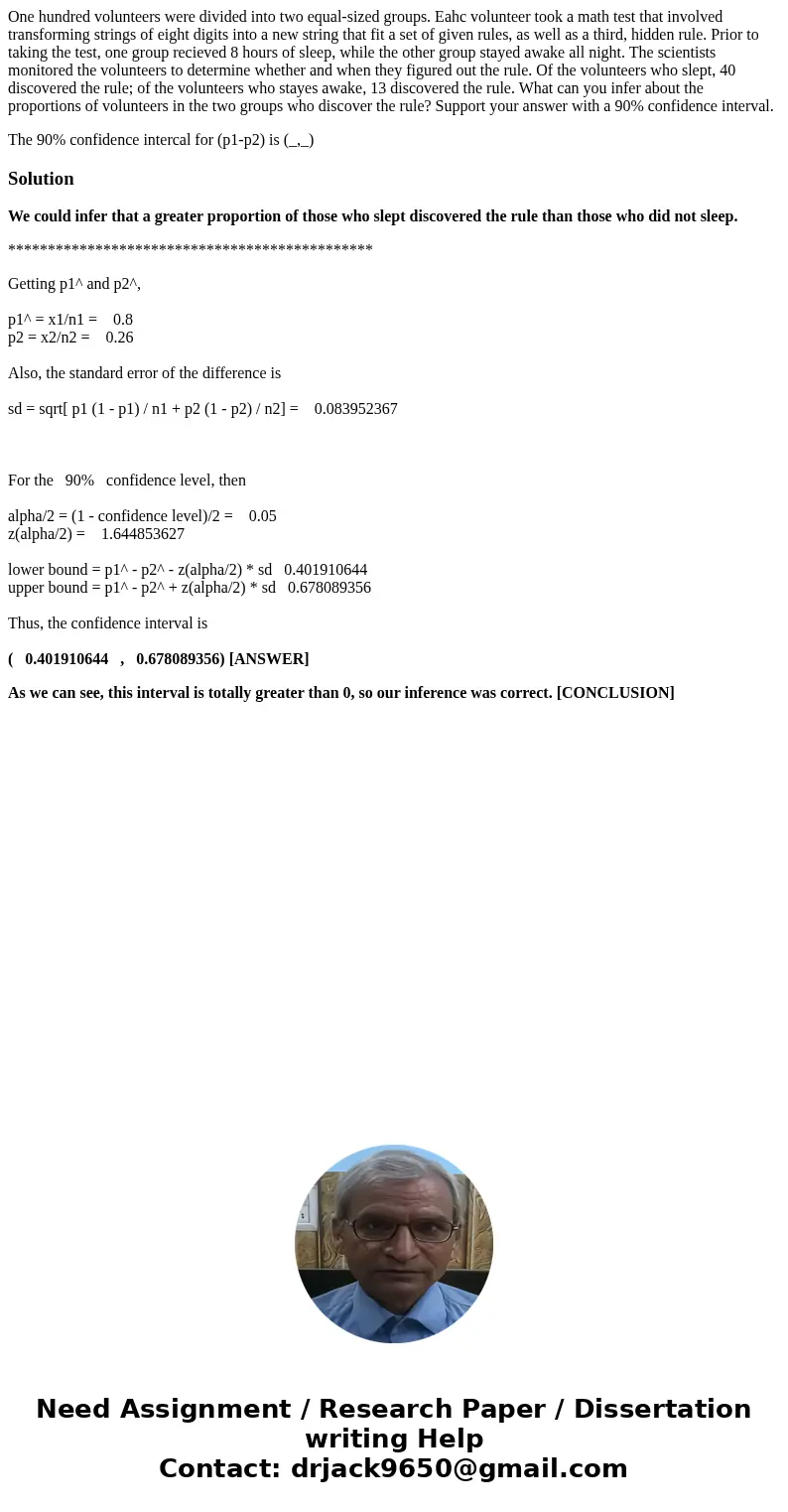One hundred volunteers were divided into two equalsized grou
One hundred volunteers were divided into two equal-sized groups. Eahc volunteer took a math test that involved transforming strings of eight digits into a new string that fit a set of given rules, as well as a third, hidden rule. Prior to taking the test, one group recieved 8 hours of sleep, while the other group stayed awake all night. The scientists monitored the volunteers to determine whether and when they figured out the rule. Of the volunteers who slept, 40 discovered the rule; of the volunteers who stayes awake, 13 discovered the rule. What can you infer about the proportions of volunteers in the two groups who discover the rule? Support your answer with a 90% confidence interval.
The 90% confidence intercal for (p1-p2) is (_,_)
Solution
We could infer that a greater proportion of those who slept discovered the rule than those who did not sleep.
**********************************************
Getting p1^ and p2^,
p1^ = x1/n1 = 0.8
p2 = x2/n2 = 0.26
Also, the standard error of the difference is
sd = sqrt[ p1 (1 - p1) / n1 + p2 (1 - p2) / n2] = 0.083952367
For the 90% confidence level, then
alpha/2 = (1 - confidence level)/2 = 0.05
z(alpha/2) = 1.644853627
lower bound = p1^ - p2^ - z(alpha/2) * sd 0.401910644
upper bound = p1^ - p2^ + z(alpha/2) * sd 0.678089356
Thus, the confidence interval is
( 0.401910644 , 0.678089356) [ANSWER]
As we can see, this interval is totally greater than 0, so our inference was correct. [CONCLUSION]

 Homework Sourse
Homework Sourse